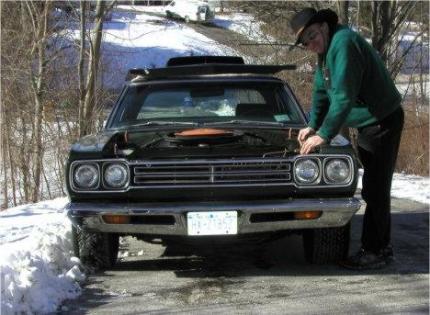Engine: 1962 Slant 6.
Was running a month ago. Now: cranks, no start. Won't fire with starter fluid or gas. Fuel flowing.
With key in run position, no cranking:
Test light shows bright light to one side of ballast resistor. Other side is a bit dimmer. (Makes sense as the resistor steps voltage down?). Positive terminal on the coil shows the same light intensity as the dimmer side of the ballast resistor. Negative terminal of coil shows no light. Should the negative terminal also be energized?
While cranking: Positive coil terminal shows pulsing light. Negative terminal shows nothing. I read somewhere that the pulsing at the positive terminal could be the starter fluctuating the power.
So, where to go from here? What should I see or not see at the negative coil terminal with the test light? What else to do? Thanks
Was running a month ago. Now: cranks, no start. Won't fire with starter fluid or gas. Fuel flowing.
With key in run position, no cranking:
Test light shows bright light to one side of ballast resistor. Other side is a bit dimmer. (Makes sense as the resistor steps voltage down?). Positive terminal on the coil shows the same light intensity as the dimmer side of the ballast resistor. Negative terminal of coil shows no light. Should the negative terminal also be energized?
While cranking: Positive coil terminal shows pulsing light. Negative terminal shows nothing. I read somewhere that the pulsing at the positive terminal could be the starter fluctuating the power.
So, where to go from here? What should I see or not see at the negative coil terminal with the test light? What else to do? Thanks


